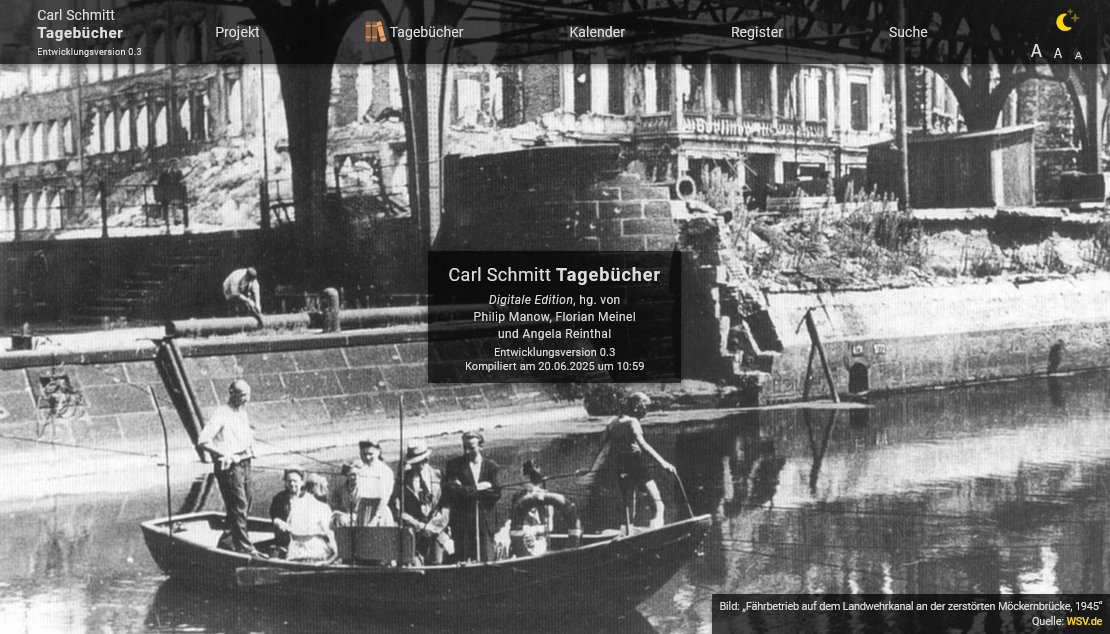Carl Schmitt Diaries
Diaries
Like few other political thinkers of the 20th century, Carl Schmitt left behind an extraordinarily extensive corpus of first-person documents, which are among the most important first-person documents in the history of political ideas of the 20th century, not least because of the close connection between biographical context, personal experience and theoretical-conceptual work in Schmitt’s work.
This applies above all to his diaries, parts of which have been edited since the 1990s from the rare Gabelsberg shorthand in which they were written. The importance of these diaries lies in the extraordinarily long period of time they cover: they extend from October 1912 to the end of the 1950s; in an increasingly less rigorous, hardly usable form, some of them even extend to the end of the 1970s
So far, six diaries are available as printed works (1912-1915, 1915-1919, 1921-1924, 1925-1929, 1930-193344, 1947-1958), i.e. the years of the late German Empire, the First World War, the Weimar Republic and the post-war period.
The diaries of the phase of Carl Schmitt’s life and work that is the least clear in terms of biographical detail and perhaps the most controversial in terms of research assessment – the years of the Second World War – have not yet been edited.
The edition of these diaries from the late war years has been underway since 2020 with the support of the German Research Foundation. The aim is to produce both a fully digital online reading edition (XML format) and a print edition
The Editions
Diary March to September 1943
The diary with the archive signature RW 265-19618 in the North Rhine-Westphalian State Archives, Rhineland Department, in Duisburg is an ordinary dark blue notebook in DIN A-6 format with squared pages throughout without pagination. The book still has 108 pages and four loose sheets inserted.
The entries in this book are mainly written in Schmitt’s Gabelsberg shorthand, interspersed with names and numbers written out in full. Due to the cramped handwriting and especially the overwriting in pencil with ink, deciphering the entries proved to be extremely complex and time-consuming.

